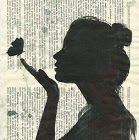11651621
B1.1A - OCR
Description
Flashcards by Jaweria Khalid, updated more than 1 year ago
More
Less

|
Created by Jaweria Khalid
almost 7 years ago
|
|
Resource summary
| Question | Answer |
| What is your genome? | A genome is the name given to all of the genetic material of an organism. |
| Why do children look a bit like their parents? But slightly different to their siblings? | People inherit their genetic information from their parents. In the same way their sibling inherit the same information but in the forms of different alleles hence they look different. |
| Your features may be dependant on two things. What are those two things? | 1) Environment - E.g. Scars 2) Inherited Genetic Information - most of your features depend on the genetic information you have inherited. E.g. Eye Colour. |
| But how can the environment impact your genome? | Although the environment does not directly interfere with your genome the environment outside a cell can affect molecules at the cell surface, resulting in a chain reaction in the cell cytoplasm. Eventually this can affect hoe the genome information is used and affect your features. E.g. Blond hair colour |
| Where can genetic material be found in humans and other animals? | Genetic material is found inside the Nucleus of each cell. These are called Eukaryoic organisms because they have a nucleus. |
| What is the name given to organisms that do not have a nucleus? | Prokaryotic Organisms. They do not have a nucleus so all of their genetic material can be found floating inside the cytoplasm. |
| What is the name given to small loops of genetic material? | Each loop is called a plasmid and they can be used in genetic engineering. |
| What is the genetic material stored as? | It is stored as long threads called chromosomes. |
| How many chromosomes are found in the nucleus of a human body cell? | There are 46 chromosomes in each nucleus of each cell. Chromosomes are present in pairs, so there are 23 pairs. |
| What are chromosomes? | Chromosomes are made up of long molecules of DNA. |
| Who discovered DNA? | DNA was discovered in 1953 by James Watson and Francis Crick. They interpreted a photograph of DNA that was taken by Rosalind Franklin and Maurice Wilkins. |
| DNA: | DNA consists of two strands that are twisted to form a double helix. Each strand of DNA is a long molecule made up of lots of small molecules called nucleotides joined to form a chain. |
Want to create your own Flashcards for free with GoConqr? Learn more.
